How to successfully pair Lovebirds together
Talking about animals it is not very usual to think about “long-lasting love”. We, humans, think that that kind of feeling is only meant to be for superior beings, but not for animals. Nevertheless,
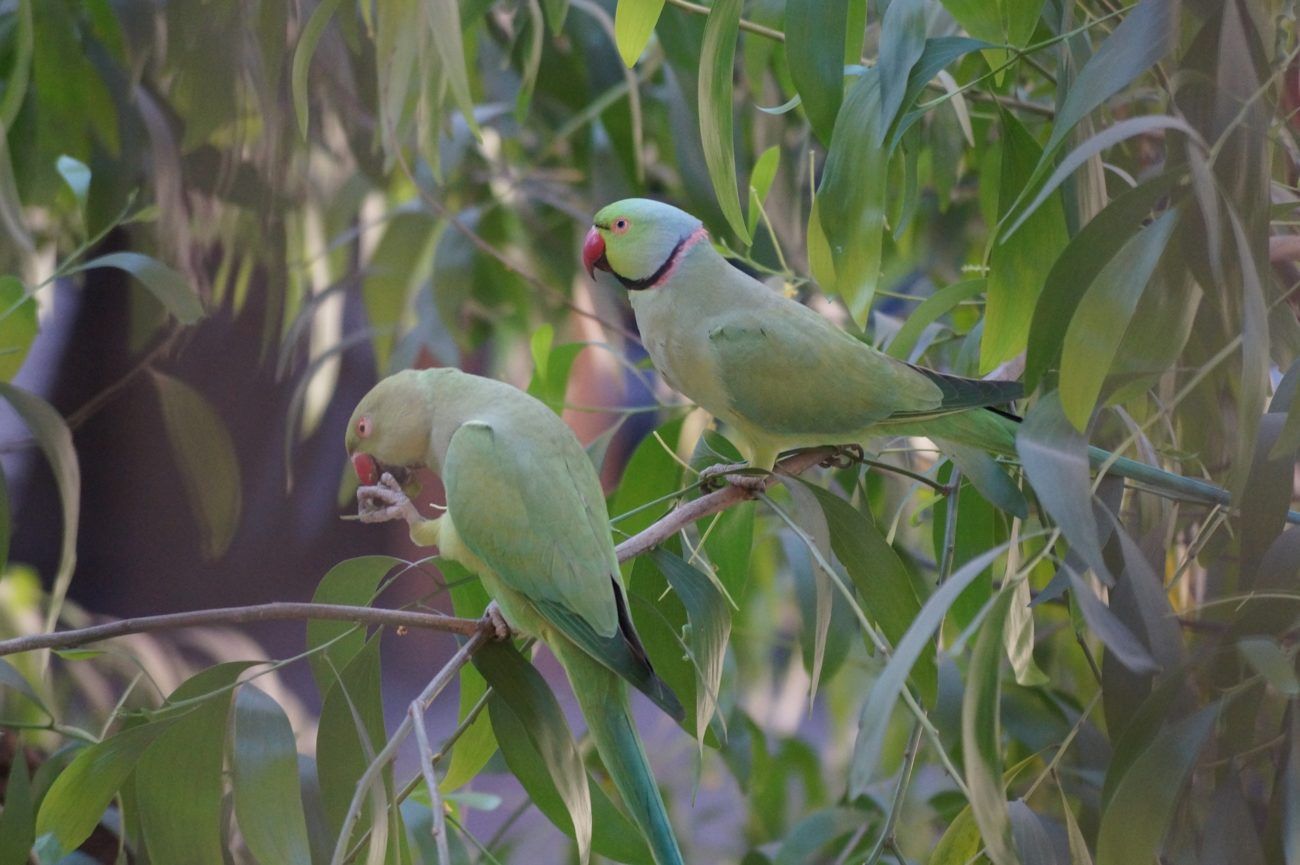
Talking about animals it is not very usual to think about “long-lasting love”. We, humans, think that that kind of feeling is only meant to be for superior beings, but not for animals. Nevertheless, some species can stay with the same couple for a long time and even a life time. The majority of those “faithful” animals are birds, but there are also some mammals that share their lives with their couples; for example elephants, wolves and killer whales. Otters are an interesting example of this phenomenon as they do everything with their partner: they live, travel, chase, play and some of them even sleep together holding “hands”.
In case of Lovebirds, they are gregarious animals that live in pairs in flocks with a clear hierarchical structure. In nature, many of the different mutations of present in lovebirds bred in captivity do not exist –at most we can see dark-factored lovebirds–. They are the true image of an ancestral bird.
The need of living in pairs.
As we already mentioned in numerous occasions, lovebirds have a strong reproductive instinct. Breeding gives meaning to their lives and that is one of the problems breeders face every single breeding season. Immediately after finishing one clutch they just want to start breeding again, then as summer starts they want to keep going… Their instinct is so powerful that only us can control how many times they breed so their health is not affected. As we are not going to free them so nature controls their reproductive instinct, it is our duty to make their lives as similar as possible to the life they could have had as wild birds. We have to make sure that they can develop the three vital functions inherent to every living being: feeding, socializing and breeding.
Assuming that all the animals we keep in captivity are well-nourished, we will then focus in the other two basic functions. As we already said, socializing is crucial. It is vital that they interact with their environment and other birds of the same species. To make this possible, we will provide them with a nice and big space and the company of other lovebirds. Let’s focus on the next function: reproduction. It is very common for new owners to ask about having a single lovebird as a pet because they do not want to have a pair that would end up breeding. Some breeders’ advice about this matter would be to get two lovebirds of the same sex so they can socialize without breeding.
Lovebirds, as the word indicates, are the birds of love. Place yourself in front of an aviary of lovebirds and you will witness the beauty of their live in the colony.
Technical details: Mating.
No doubt the best pairs are those that are created spontaneously. Breeding in an aviary we will witness that little after start eating by themselves, when they are about 60 days old, lovebirds start looking for their pair. As soon as they establish a strong bond with their mate, they will become independent from their parents and siblings. Breeders do not always do the right thing; sometimes we are responsible of not letting them choose their pair so they end up with one of our choice. In my case, when two lovebirds choose to be together and I check that their blood and mutations are compatible, they stay together. Nevertheless, we have to reckon that in many occasions breeders want to get concrete offsprings so we need that a male of a specific mutation mates with a female of another specific mutation. In this case, contrary to what I said before, we would need to use a cage; although it would be for a short period of time. The time they would need to spend in the cage would depend on the age of the lovebirds. That is to say, a young male and female would need very little time to mate, but two adults will take longer. In case of the adults it would be even advisable to keep them in the cage until they breed for the first time.
Also, we will also need to use a cage if we want two adults (or one adult and a younger one) to mate. We need to take our time as it is not a good idea to rush in this situation. The best will be to use a breeding cage with a divider. We will place the male in one side and the female in the other until we notice that they start interacting with each other, specially the female. Females are more dangerous in this kind of situation, so if one of them gets hurt it would probably be the male. If we use two cages to let them see each other for a while, do not place the male in the cage where the female stays. It is always advisable to do it the other way around, placing the female in the cage of the male. Females are very territorial and they will feel they are being invaded. We will not have any problem if we just keep them in the cage and we limit their interaction with other lovebirds. This way we will be sure that they will end up mating. Regardless of whether we use a cage or an aviary for breeding, we may come across with a pair of our choice that does not bond. This case is not very usual, but it happens. There are more chances for this to happen in the aviary than in the cage. Being in the cage they will get used to each other sooner or later. In the aviary it is better to choose another pair for them until they are completely independent from each other.
Technical details: Incompatibility.
There are not many incompatibilities when it comes to pair lovebirds, but we will point out the most notorious. Although its seems logical, the first thing we should check is whether we have a pair of a male and a female or not. To determine their sex the safest method is DNA sexing. Male and female must be of the same species. We keep on seeing many hybrids, some of them even sterile. This is something we should avoid at all costs. Also, having lovebirds of different species breeding in the same aviary it is not advisable even if we see that their coexistence is possible. Unfaithfulness, nests invasions, attacks to other offsprings and quarrels were some of the problems I faced when I first started breeding personatus and roseicollis in the same aviary. But, that said, some breeders have even exchanged chicks from different species without problems. Other incompatibilities that may arise are related to the mutations of the male and female. There are two main mutational incompatibilities: we should avoid that both of the members of a pair are Ino and that both have two Dark Factors. Ino mutation can cause the chicks to be weaker and the two Dark Factors can affect the structure of the feathers.
In both cases, chicks will have the same mutation as their parents, Ino mutation in the first example and two Dark Factors in the second. Some breeders doubt whether Ino mutation can cause any weakness to the chicks. In fact, this will depend on how many ancestors of the chicks have the same mutation and also will depend on the species; being the Agapornis Roseicoillis the species less prompt to suffer this condition. There are two types of combinations that even if at first they do not present any incompatibility, they would not be interesting for us as one of them will make “cover” the other. For instance, if we have an Ino lovebird that is also Marbled o Dilute we will not be able to notice these last mutations, or at least not completely. There are also some unaesthetic combinations like Marbled and Dilute mutations together. As both mutations reduce the eumelanin the resulting color would be dull.
Technical details: Recommended combinations.
As we mentioned before, there are combinations that may not be incompatible, but which results would not be very convenient. A good example would be the combination of a Blue male with a Green Opaline Ino female. If this pair does not carry those mutations, all the offsprings will be green. All will carry the mutations, but they will look the same. That is why, before making a pair, it is very important to know how the offsprings will look like so we can choose our pair correctly. Knowing their mutations is crucial. This is always the case with recessive mutations. For example, a Marbled Orange-faced lovebird will not be a good combination for a pair that has not the same mutations. Once we have into account all these considerations, all we need to do is to provide them with their nests in autumn until late spring. We will then witness how females choose a nest, males protect them and… how live goes on.
Juan A. García. “Agapornis La Isla”

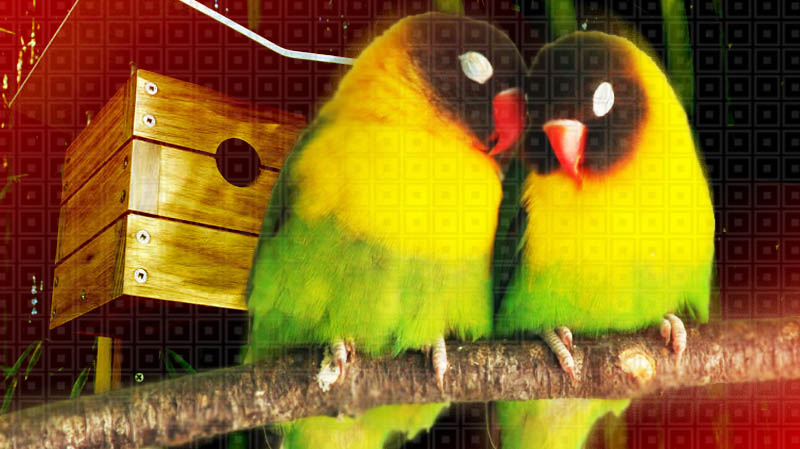
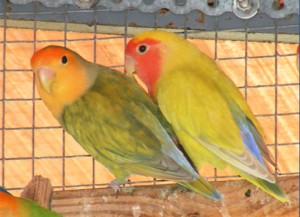
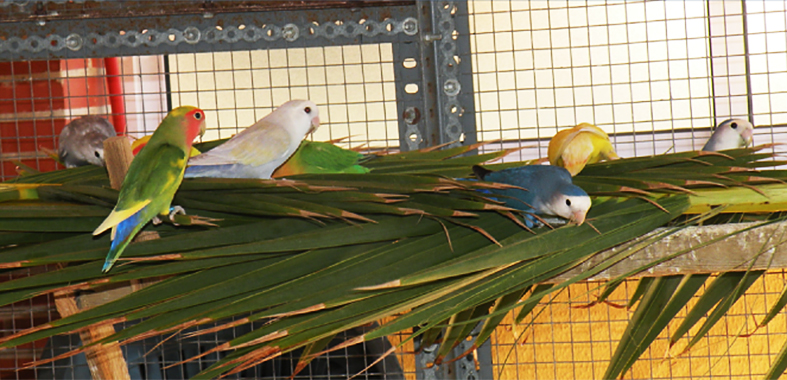
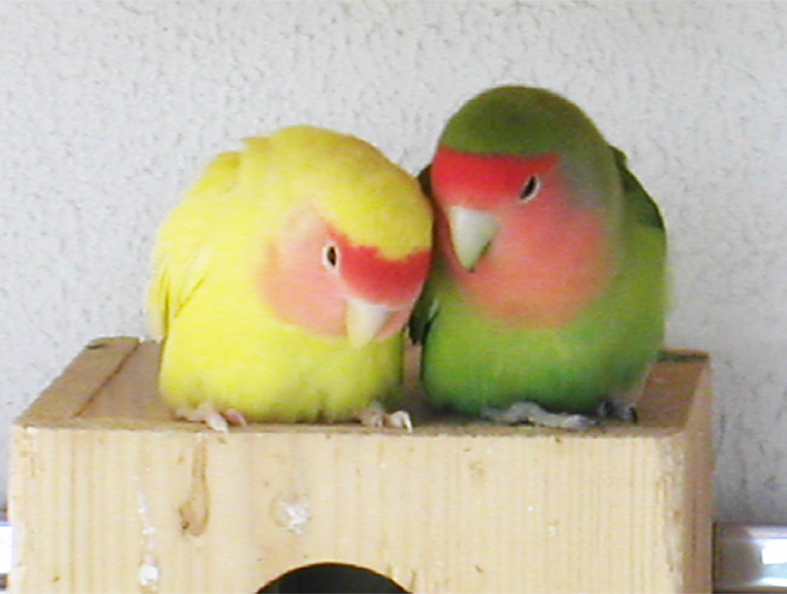
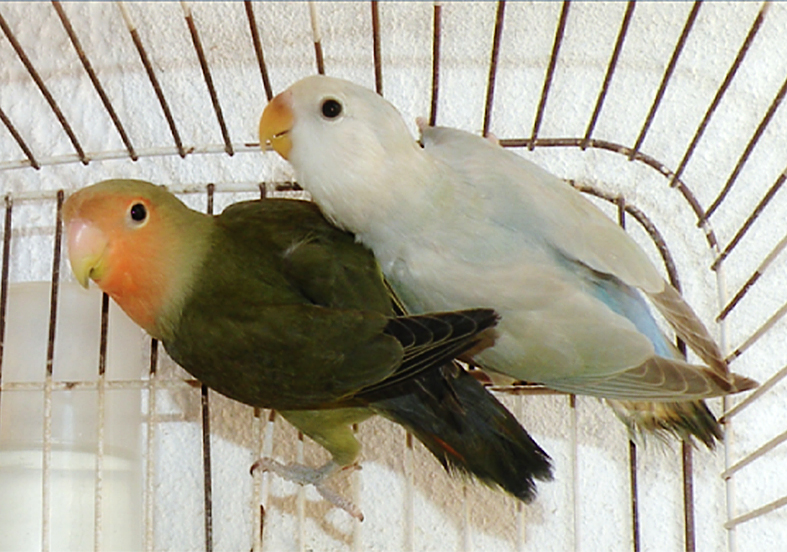
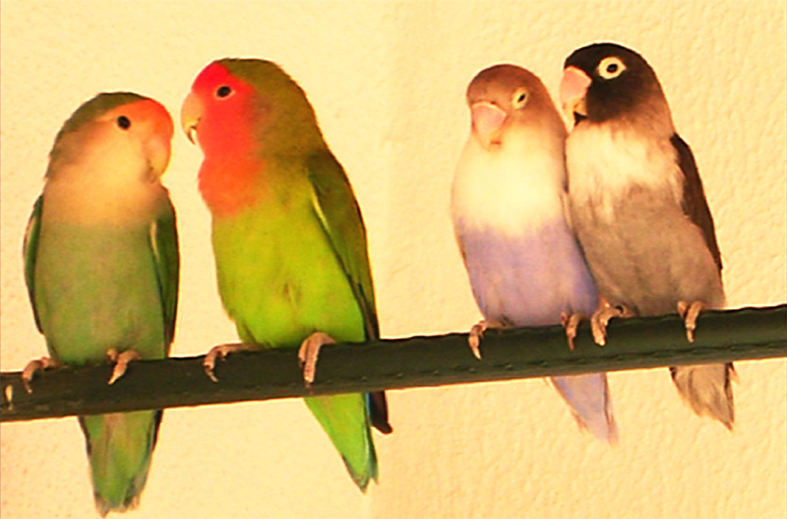
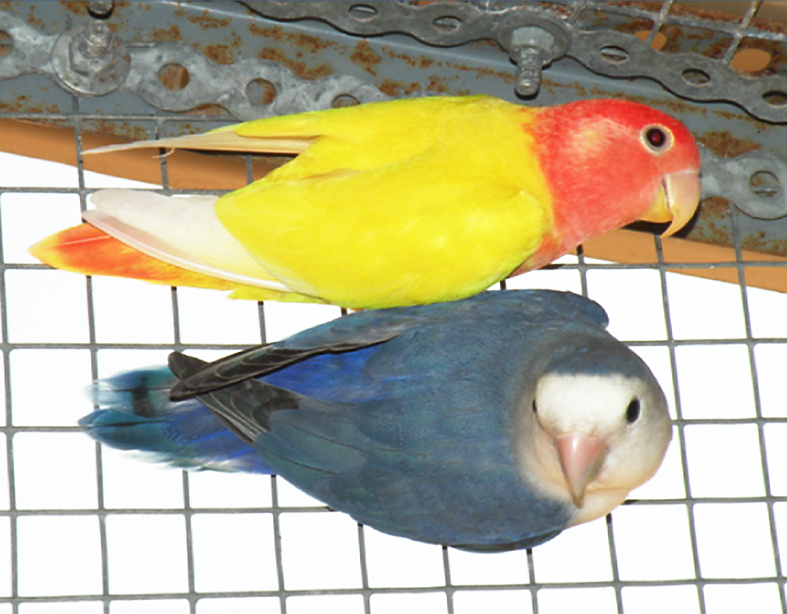
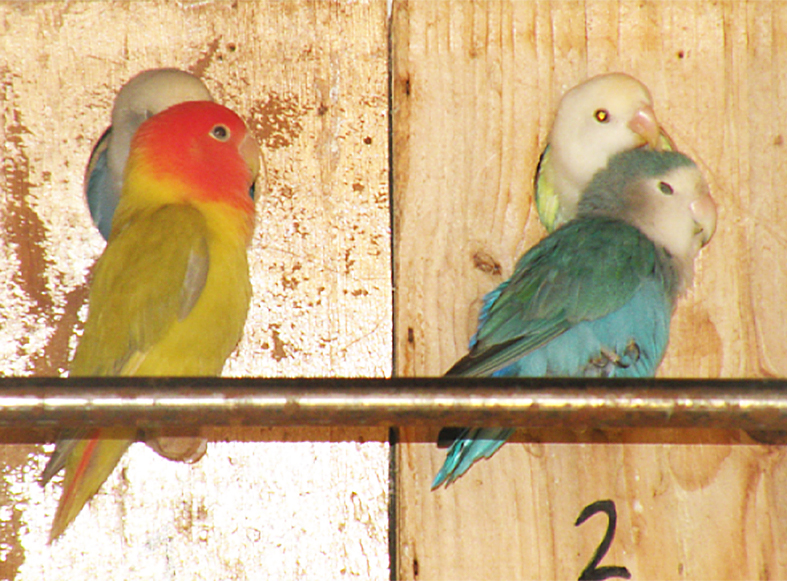

Abdul Majid June 15, 2019
Hi I hope you will be fine I would like to know is there any way to get opaline Fischer through common Fischer hybridisation.
Kaylee May 15, 2022
I know my lovebird’s sexes by looking at how they sit and I’m 9 years old!
Arturo Arroyo April 18, 2020
I’m having trouble determining if my the gender of my birds. How can I find out if my birds are male or female without taking a dna test?
Mei September 7, 2020
A DNA test is literally 15 dollars through a company like HealthGene and you can do it at home… If you don’t want to spend that small amount of money then should you really be trying to breed birds?
Myra Hammond January 12, 2021
Females tend to be larger than the males that can be something to consider when pairing birds. And females are more aggressive to the male.
Sexado de Aves January 14, 2021
thanks Myra
Kathy January 20, 2021
You can have their dna checked
lauren May 5, 2020
hi im having the same problem i think that my pair is both female becase one day therer were three egges i waited 30 days then candeled them all three were infertile so i dont know any more got any advice
Mei September 7, 2020
Pay the 15 dollars to DNA your birds. It’s cheap.
Keri July 6, 2020
I have 2 lovebirds caged together I believe 2 males because they are over a year and no eggs. I just got another lovebird from same breeder this one is 6 months old. Looks just like my other 2 so I believe another boy. Their cages are up next to each other and they all gather on the bars and talk to each other. When is it safe to cage them together
Mei September 7, 2020
You cannot tell gender from the color of a lovebird. Get a DNA test done on your birds. It’s cheap.
Judyd July 13, 2021
I have 2 female lovebirds. I would love to find them mates. I have a blue black masked abt a yr old. The other one is green with a light orange beak like it’s part fisher. This one is younger. I have watched females sit on eggs that never hatch and it is sad. Please help
Frank August 16, 2020
with out an ( DNA ) is there a rough gide to sexing peachface love birds i have been told the shape of the tail is different the width of the legs when sitting on the perch has any one found this as a quick & rough guide
Vindya August 24, 2020
Brown beak will be female. Blue beak will be male.
Raza September 5, 2020
Can we pair up personata with albino red eye?
Donna Aylward September 10, 2020
I have a breeding pair of green peach faced lovebirds but my male has now took a shine to my yellow peach face and is not interested in his mate anymore . Is this common
Renee Poole February 2, 2021
How do you get a multi color live bird. I bought one and he is with a dutch blue but never can get a multi color but with his babies trying to figure out how maybe to get multi color